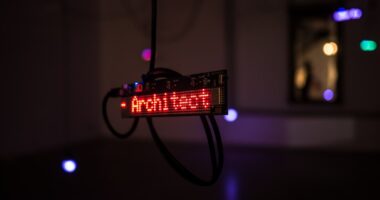Ethereum tokens are digital assets that are built on the Ethereum blockchain. They can represent any fungible or non-fungible asset, such as currencies, commodities, or even virtual items in video games. These tokens are created using smart contracts, which are self-executing contracts with the terms of the agreement directly written into code.
Tokens play a crucial role in the Ethereum ecosystem as they enable developers to create decentralized applications (DApps) and build new financial systems. They provide a way to tokenize real-world assets and create digital representations that can be easily traded and transferred on the blockchain.
The concept of Ethereum tokens was introduced in 2015 with the launch of the Ethereum blockchain. The first and most well-known token standard is ERC-20, which defined a set of rules and standards for creating tokens on the Ethereum network. Since then, several other token standards have been introduced, including ERC-721 for non-fungible tokens (NFTs) and ERC-1155 for both fungible and non-fungible tokens.
Key Takeaways
- Ethereum tokens are digital assets that can represent anything from currency to loyalty points.
- ERC standards are guidelines for creating tokens on the Ethereum network, with ERC-20 being the most popular.
- Custom tokens can provide benefits such as increased brand recognition and flexibility in functionality.
- Before developing a token, it’s important to have a clear plan and understanding of the Ethereum network.
- Writing and deploying smart contracts for token creation requires knowledge of Solidity and the Ethereum Virtual Machine.
Understanding ERC Standards
ERC stands for Ethereum Request for Comment, which is a technical standard used for proposing improvements to the Ethereum network. ERC standards define a set of rules and guidelines that developers can follow when creating tokens on the Ethereum blockchain.
ERC-20 is the most widely used token standard on Ethereum. It defines a set of functions that all ERC-20 compliant tokens must implement, such as transferring tokens between addresses, checking token balances, and approving token transfers. This standard has been instrumental in the growth of the decentralized finance (DeFi) ecosystem, as many DeFi protocols rely on ERC-20 tokens for liquidity and governance.
ERC-721 is a token standard specifically designed for non-fungible tokens (NFTs). Unlike ERC-20 tokens, which are interchangeable with each other, each ERC-721 token is unique and cannot be replaced by another token. This makes ERC-721 tokens ideal for representing ownership of digital assets, such as collectibles, virtual real estate, or in-game items.
ERC-1155 is a newer token standard that combines the features of both ERC-20 and ERC-721. It allows for the creation of both fungible and non-fungible tokens within the same smart contract. This makes it more efficient and cost-effective for developers to create and manage multiple types of tokens.
Benefits of Creating Custom Tokens
Creating custom tokens on the Ethereum blockchain offers several advantages. First, it allows businesses and individuals to tokenize real-world assets, such as real estate, art, or intellectual property. By representing these assets as tokens on the blockchain, they can be easily traded and transferred, providing liquidity and unlocking new possibilities for asset ownership.
Custom tokens also enable the creation of decentralized applications (DApps) and new financial systems. Developers can use tokens to incentivize user behavior, create governance mechanisms, or build decentralized exchanges. Tokens provide a way to align incentives and distribute value within a network, fostering community participation and engagement.
There have been numerous successful examples of custom tokens on Ethereum. One notable example is the tokenization of real estate through platforms like RealT and Propy. These platforms allow investors to buy fractional ownership in properties, enabling them to diversify their portfolios and access previously illiquid assets.
Another successful use case is the creation of utility tokens for DApps. Projects like Chainlink and Compound have created their own tokens that are used within their respective ecosystems. These tokens provide access to services or act as a form of governance within the network.
Preparing for Token Development
| Metrics | Description |
|---|---|
| Token Economics | The study of how tokens will be distributed, used, and valued within the ecosystem. |
| Smart Contract Audit | The process of reviewing and testing the code of a smart contract to ensure it is secure and functions as intended. |
| Token Sale Platform | The platform used to conduct the token sale, such as an ICO or STO. |
| Legal Compliance | The process of ensuring the token sale and associated activities comply with relevant laws and regulations. |
| Marketing Strategy | The plan for promoting the token sale and building awareness of the project. |
Before starting the development of a custom token, it is important to take several steps to ensure success. First, it is crucial to research the market and competition to understand the demand for your token and identify any potential competitors. This will help you define your unique selling proposition and differentiate your token from others in the market.
Next, it is important to define the specifications and use cases for your token. Consider factors such as token supply, distribution mechanism, and utility within your ecosystem. Think about how your token will provide value to users and what problem it will solve. This will help you create a compelling narrative and attract users and investors to your project.
It is also important to consider the legal and regulatory aspects of token development. Depending on the jurisdiction, there may be specific regulations that apply to token offerings or the operation of certain types of tokens. Consult with legal experts to ensure compliance with relevant laws and regulations.
Setting Up the Ethereum Development Environment
To develop Ethereum tokens, you will need to set up a development environment that includes the necessary tools and software. There are several popular Ethereum development tools available, such as Truffle, Remix, and Hardhat.
Truffle is a development framework that provides a suite of tools for smart contract development, testing, and deployment. It includes a development console, a testing framework, and a deployment pipeline. Truffle also integrates with popular Ethereum networks like Ganache, allowing you to easily deploy and test your smart contracts.
Remix is an online IDE (Integrated Development Environment) that allows you to write, compile, and deploy smart contracts directly from your web browser. It provides a user-friendly interface and supports multiple programming languages, including Solidity, Vyper, and Yul.
Hardhat is another popular development environment for Ethereum. It offers a wide range of features, including built-in testing, debugging tools, and support for multiple networks. Hardhat also integrates with popular developer tools like Truffle and Remix.
Once you have chosen a development environment, you will need to install the necessary software and dependencies. This typically includes installing Node.js, which is required for running JavaScript-based tools like Truffle and Hardhat. You will also need to install a package manager like npm or yarn to manage your project dependencies.
Writing Smart Contracts for Token Creation

Smart contracts are self-executing contracts with the terms of the agreement directly written into code. They are the building blocks of Ethereum tokens and define the rules and logic for token creation, transfer, and management.
Smart contracts are typically written in Solidity, a programming language specifically designed for Ethereum. Solidity is statically typed and supports inheritance, libraries, and complex user-defined types. It is similar to JavaScript in terms of syntax and has a growing ecosystem of tools and frameworks.
To create a token using a smart contract, you will need to define the necessary functions and variables. For example, you will need to define functions for transferring tokens between addresses, checking token balances, and approving token transfers. You will also need to define variables for storing token balances and allowances.
It is important to follow best practices when writing smart contracts to ensure security and avoid vulnerabilities. This includes using safe math libraries to prevent integer overflow and underflow, implementing access control mechanisms to restrict certain functions to authorized users, and thoroughly testing your smart contracts before deploying them to the Ethereum network.
Deploying Tokens to the Ethereum Network
Once you have written your smart contract for token creation, you will need to deploy it to the Ethereum network. Deploying a token involves deploying the smart contract to an Ethereum network, such as the mainnet or a testnet.
Before deploying your token, it is important to thoroughly test it on a testnet to ensure that it functions as expected. Testnets are separate Ethereum networks that mimic the mainnet but use test Ether (ETH) instead of real Ether. This allows developers to test their smart contracts without incurring any costs.
To deploy your token, you will need to use a deployment tool like Truffle or Hardhat. These tools provide a deployment pipeline that allows you to easily deploy your smart contracts to the Ethereum network. They also handle tasks like contract compilation, gas estimation, and transaction signing.
Once your token is deployed, it will have a unique address on the Ethereum network. This address can be used to interact with the token, such as transferring tokens, checking balances, or approving token transfers.
Testing and Debugging Token Contracts
Testing and debugging smart contracts is a critical step in the token development process. It helps identify and fix any issues or vulnerabilities before deploying the contract to the Ethereum network.
There are several tools available for testing and debugging smart contracts. Truffle and Hardhat both provide built-in testing frameworks that allow you to write automated tests for your smart contracts. These tests can simulate different scenarios and ensure that your smart contracts behave as expected.
In addition to automated testing, it is also important to perform manual testing to catch any edge cases or unexpected behavior. This can involve manually interacting with the smart contract using tools like Remix or a custom web interface.
Common issues that can arise when testing and debugging smart contracts include reentrancy attacks, integer overflow and underflow, and incorrect access control. It is important to thoroughly test your smart contracts and use best practices to mitigate these issues.
Integrating Tokens with Wallets and Exchanges
Integrating tokens with wallets and exchanges is an important step in making your tokens accessible to users. Wallet integration allows users to store, send, and receive tokens, while exchange integration enables users to trade tokens on decentralized exchanges (DEXs).
To integrate tokens with wallets, you will need to follow the wallet’s integration guidelines and provide the necessary information, such as token contract address, symbol, and decimals. Most wallets support ERC-20 tokens out of the box, so integration should be relatively straightforward.
To integrate tokens with exchanges, you will need to follow the exchange’s listing guidelines and submit a listing request. This typically involves providing information about your token, such as contract address, symbol, decimals, and a description. The exchange will then review your request and decide whether to list your token.
It is important to follow best practices when integrating tokens with wallets and exchanges. This includes thoroughly testing your token integration to ensure that it functions as expected and provides a seamless user experience.
Keeping Up with the Latest Ethereum News and Updates
Staying up-to-date with the latest Ethereum news and updates is crucial for token developers. The Ethereum ecosystem is constantly evolving, with new features, improvements, and standards being introduced regularly.
There are several resources available for staying informed about Ethereum news. Websites like CoinDesk, CoinTelegraph, and Ethereum.org provide news and updates about the Ethereum ecosystem. Twitter is also a valuable resource for following Ethereum developers, influencers, and community members.
In addition to news websites and social media, it is also important to participate in the Ethereum community. Joining forums like Reddit’s r/ethereum or Discord channels allows you to engage with other developers, ask questions, and share knowledge.
By staying informed about the latest developments in the Ethereum ecosystem, you can ensure that your tokens are built using the latest standards and best practices. This will help you create more secure and interoperable tokens that can easily integrate with other projects in the Ethereum ecosystem.
Ethereum tokens have revolutionized the way we think about digital assets and financial systems. They provide a way to tokenize real-world assets, create decentralized applications, and build new financial systems. By following the steps outlined in this article, you can start developing your own custom tokens on the Ethereum blockchain.
From understanding ERC standards to setting up the development environment, writing smart contracts, deploying tokens, and integrating with wallets and exchanges, there are many aspects to consider when developing Ethereum tokens. It is important to thoroughly research the market, define token specifications, and follow best practices to ensure success.
As the Ethereum ecosystem continues to evolve, it is important to stay up-to-date with the latest news and updates. By staying informed and participating in the Ethereum community, you can take advantage of new features and opportunities as they arise.
The future of Ethereum tokens is bright, with new standards and innovations being introduced regularly. By starting your journey in token development now, you can be at the forefront of this exciting and rapidly growing ecosystem.
If you’re interested in diving into the world of Ethereum token development, you might find this article on eth-news.com quite informative. Titled “Hello World: A Beginner’s Guide to Ethereum Token Development,” it provides a comprehensive introduction to creating your own tokens on the Ethereum blockchain. Whether you’re a developer looking to expand your skillset or an entrepreneur exploring the potential of blockchain technology, this article will guide you through the process step by step. Check it out here for a valuable resource on Ethereum token development.
FAQs
What is Ethereum Token Development?
Ethereum Token Development refers to the process of creating a new digital asset on the Ethereum blockchain. These tokens can represent anything from a currency to a share in a company.
What is the Ethereum Blockchain?
The Ethereum blockchain is a decentralized, open-source blockchain that allows developers to build decentralized applications (dApps) and smart contracts. It is the second-largest blockchain by market capitalization after Bitcoin.
What are the benefits of creating an Ethereum Token?
Creating an Ethereum Token allows for the creation of a new digital asset that can be used for a variety of purposes, such as fundraising, incentivizing users, or creating a new currency. Additionally, Ethereum Tokens can be traded on cryptocurrency exchanges, providing liquidity and potential profits for investors.
What programming language is used for Ethereum Token Development?
The most commonly used programming language for Ethereum Token Development is Solidity, a contract-oriented programming language specifically designed for the Ethereum Virtual Machine (EVM).
What is an ERC-20 Token?
An ERC-20 Token is a standard for Ethereum Tokens that ensures compatibility with other Ethereum-based applications and wallets. It defines a set of rules and functions that all ERC-20 Tokens must follow, allowing for seamless integration with other Ethereum-based projects.
What is a Smart Contract?
A Smart Contract is a self-executing contract with the terms of the agreement between buyer and seller being directly written into lines of code. Smart Contracts allow for the automation of complex processes and the removal of intermediaries, reducing costs and increasing efficiency.






6 comments
I am extremely inspired along with your writing skills and also with the structure to your blog. Is that this a paid topic or did you modify it your self? Either way keep up the excellent quality writing, it’s rare to peer a great weblog like this one these days. !
Thank you for your sharing. I am worried that I lack creative ideas. It is your article that makes me full of hope. Thank you. But, I have a question, can you help me?
I don’t think the title of your article matches the content lol. Just kidding, mainly because I had some doubts after reading the article.
Thank you for your sharing. I am worried that I lack creative ideas. It is your article that makes me full of hope. Thank you. But, I have a question, can you help me?
Your point of view caught my eye and was very interesting. Thanks. I have a question for you.
видео mailsco online содержит подготовку, фильмирование и монтаж.